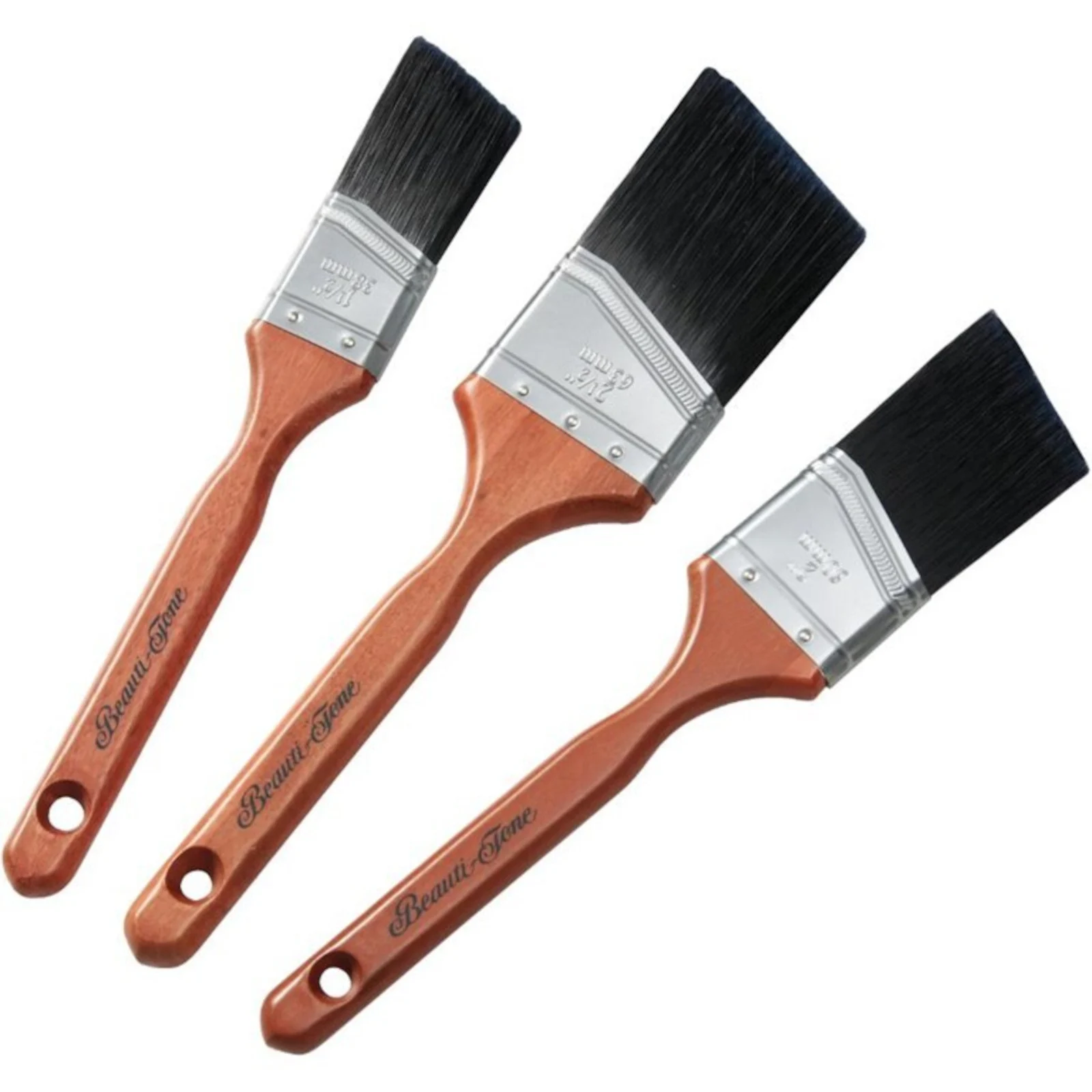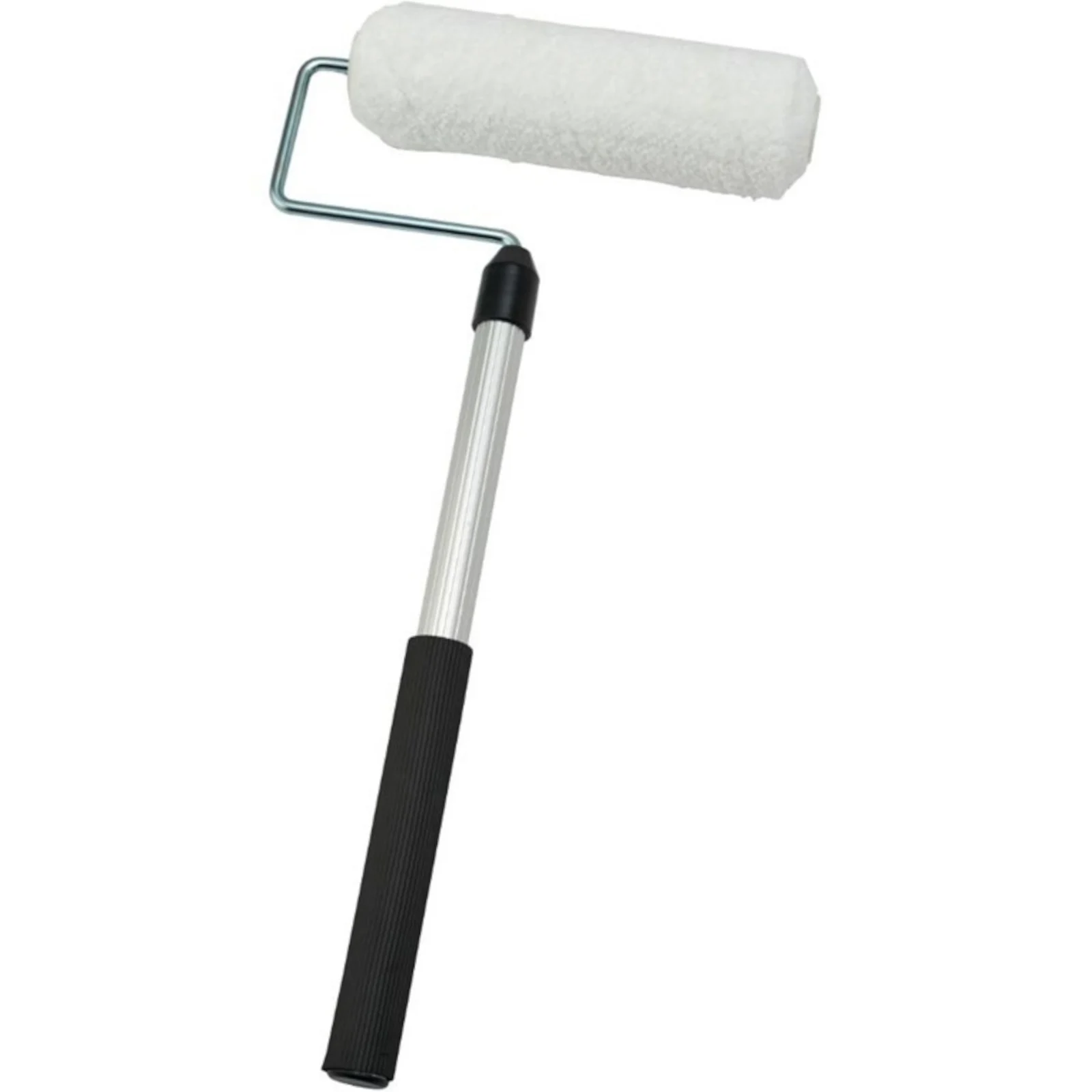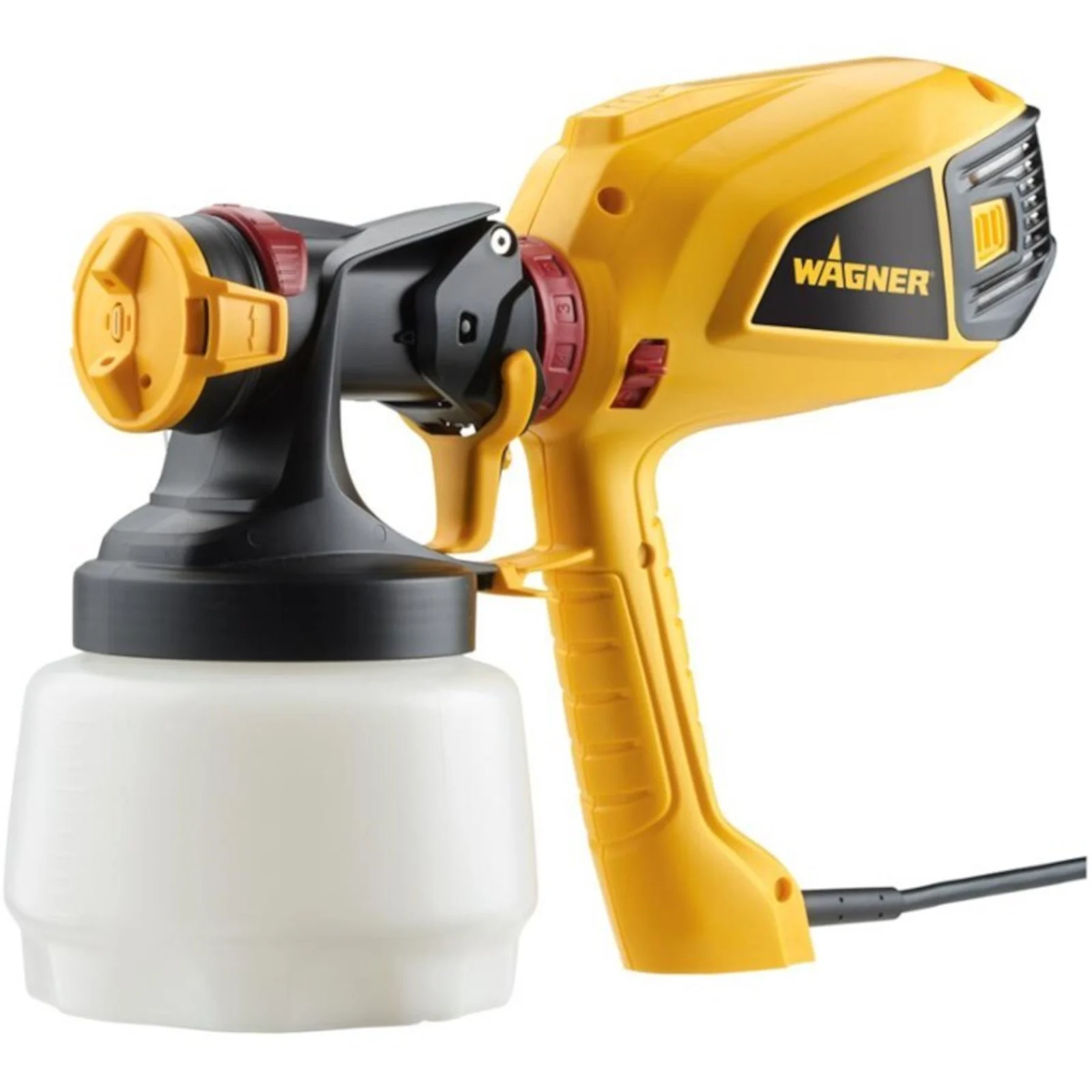Here’s How to Find the Right Paintbrush or Roller for Every Paint Job
Paint is a home decorator’s best friend.
A new shade can revitalize a room, make over cabinetry or add new life to tired furniture. Optimize your paint projects with these trusty sidekicks: paintbrushes, paint rollers and paint sprayers. Here’s what you need to know.

Common Paint Tools
High quality paintbrushes and paint rollers promote faster, smoother coverage; fewer drips and spatter; and easier clean-up. With the proper care, the following tools can last for years.



Buying Considerations
Choosing the right paintbrush or roller cover will help you get the results you want. Here’s how to choose between brush widths and roller covers.
| 1” to 1 1⁄2” angle or flat brush | This narrow brush is fine enough to cut in tight corners, as well as paint window mullions and other detailed areas. It is also great for craft projects. |
| 2” to 2 1⁄2” angle sash brush | This brush, with its angled design, delivers precise results for cutting in walls and ceilings, and painting window frames, casings, and door mouldings. |
| 2” to 2 1⁄2 flat brush | This medium-width brush provides even coverage for baseboards, cabinetry, moulding, furniture, stairs, railings, shutters and gutters. |
| 3” to 4” flat brush | This wide brush — with its flat, straight bristles — is ideal for painting or staining exterior siding, decks, masonry, walls, ceilings and doors. |
| 5 – 10 mm pile roller cover | This roller cover, with its relatively shallow pile, is suited to smooth surfaces like untextured plaster, drywall, wallboard and metal. |
| 10 – 15 mm pile roller cover | This medium-pile roller refill can be used when painting lightly textured walls, ceilings, panel- ling and acoustical tile. |
| 20 – 30 mm pile roller cover | This roller cover has a deep, plush pile, which ensures even coverage on brick, block, stucco or heavily textured plaster. |
Painting Accessories
Eye Protection
Wear safety glasses or goggles to protect your eyes from dust and paint splashes.
Paint Scraper
Use a scraper for tough wallpaper or paint removal tasks. Scrapers come in different sizes to tackle specific jobs, from flat surfaces to tight crevices.
Extension Pole
A paint roller extension pole helps you reach high locations with more ease and accuracy.
Putty Knife
Use a putty knife to apply joint compound to fill in small holes, cracks and surface imperfections before painting.
Painter’s Tape
This easy-to-remove, no-residue tape can be used to mask off mouldings, windows, doors and ceilings from unwanted paint.
Drop Cloth
Reusable canvas drop cloths will protect floors and furniture through countless home improvement projects.
Sandpaper
Available as sheets, blocks, sponges – and discs or belts for use on power sanders – sandpaper is used to rough up surfaces for better paint adhesion.
Paint Tray
To load a roller with the right amount of paint on it, try getting a paint tray. You can find one in a reusable or disposable format.
Paint Can Opener
Even the snuggest-fitting quart and gallon lids are no match for this inexpensive tool. Use this, rather than your more-expensive-to-replace screwdriver.
Good to Know
After applying two coats, let the paint cure (harden) for about one week before reinstalling cabinet hardware and remounting the cabinet doors.
BeautiTone Cabinet & Furniture Paint is 100% acrylic enamel for a durable, scrubbable pearl finish and an easy soap-and-water cleanup.
For superior results, use BeautiTone Stick-It Primer Sealer and let dry before painting.